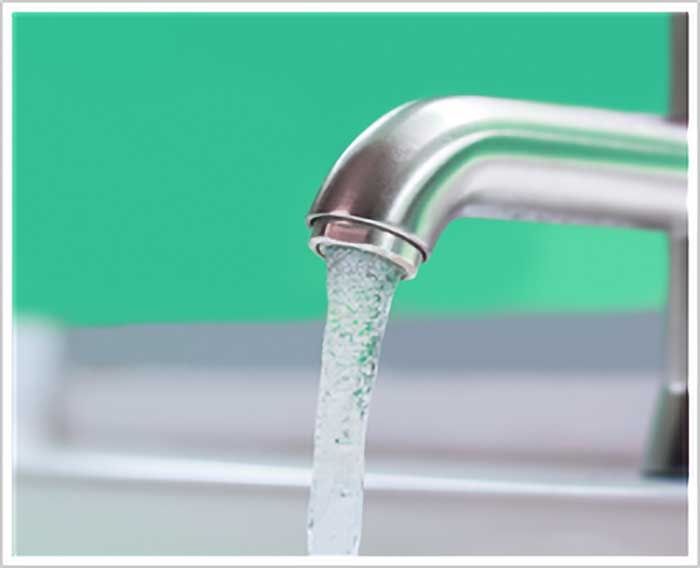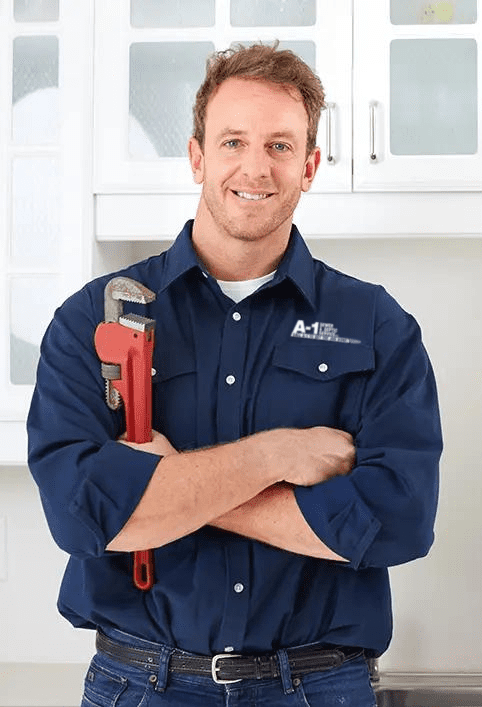
There could be a number of reasons why you’re getting no hot water in the house. The fix could be as quick as flipping the circuit breaker, lighting the pilot light, or you might have to clean out the entire hot water tank from sediment buildup, replace the heating element or fix the leaking tank on your hot water heater.
Whatever steps you have to take to restore your hot water, the first is to pinpoint what the problem is. Here are some DIY tips on how to troubleshoot a hot water heater that’s failing you, before you decide to look at a new water heater. (Upgrading to a more efficient, tankless water heater, can give better performance, water temperature, and savings on your energy bills!) Keep in mind that the lifespan of water heaters varies, but most do not make it decades and decades.
WARNING – if you smell gas (natural gas has an additive that makes it smell like rotten eggs), then you may have a gas leak and need to call the gas company immediately. That rotten egg smell is there on purpose to help alert homeowners to a gas leak. Once the gas leak is stopped and the gas supply is turned off, you can look to have a plumbing expert come to repair the supply line or whichever gas line may have the leak.
Check the Pilot Light
If you have a gas water heater, one of the first things you can check is the pilot light. The gas supply comes from your service into your home, and there is a gas line that runs to your gas water heater. There is a small flame that is kept on constantly for when the system needs to light the heating element. Without the pilot, you’re getting a cold shower and unhappy homeowners. The pilot going out is one of the common reasons you have no hot water.
How you go about re-lighting it will depend on the model of your water heater, and there is no easy reset button, but a hot shower is only a few steps away. Be sure to consult the instructions on the tank. One of the most important things to get right in the process is the timing, and your tank will be labeled with these specifics.
WARNING – if you are not 100% confident in your ability to light the pilot light, please call a professional to assist.
Generally speaking, you would need to turn down the temperature as low as possible on your heater, and then turn the gas valve off. After ten minutes, you can take off the cover on the burner assembly. How you proceed depends on whether or not the heater has its own pilot light igniter (true of newer models), or if you have to light the pilot yourself with a long lighter to reach the ignitor.
If there is a pilot light igniter, you will usually have to:
- Rotate the dial to “Pilot”.
- Press the button for as long as instructions say to do so.
- This should light the pilot, but you need to watch that it remains lit.
- If the pilot stays lit for as long as the instructions tell you to wait and watch, you can turn the gas valve on.
- Don’t forget to put the cover back on.
Aside from any differences listed in your model’s instructions, the difference for heaters that do not have this igniter is that when you move the dial to “Pilot” and press and hold the button, you will have to have a long match or grill lighter at the ready to ignite the light yourself. If it does ignite before the gas valve goes off, then you have to wait to try again.
Want to Adjust the Thermostat?
Perhaps your instinct is to raise the temperature on your heater. If so, proceed with caution. Is your water heater set to 120 degrees? That is the typical factory setting, and it’s usually the recommended setting. Unless the temperature is below the recommended setting for some reason, it is probably not the best idea to adjust the control knob thermostat on your water heater, and here are a few reasons why:
- Raising the temperature just ten degrees can increase the risk of scalding or burn injuries.
- In less than a second, water that is at 160 degrees can inflict second or third-degree burns.
- A child or elderly person could be harmed at even lower temperatures.
If the thermostat is simply not working on an electric water heater, then you might need to replace it. There is an upper thermostat in some cases, where the lower water heater thermostat controls the burner assembly or heating element. There are usually also high-temperature cutoff switches that either may need to be reset or replaced before the faucet stops giving anything but cold water.
For a gas water heater, the real problem could be the gas valve or thermocouple, either of which could need replacement. If your heater was made in the 1990s, then the issue could be a faulty dip tube that needs to be replaced. Or maybe your water heater tank is simply too small to handle all that is demanded of it. For example, a 40-gallon tank can be enough for two or three people, but if a household increases in size, or if you have children or teens in your house, the hot water can simply run out on you. In this case, the real solution could be installing a bigger tank.
Check the Water Heater Elements
On an electric water heater, there will usually be two elements. If the hot water is gone, you could test these elements to see if they are working. You may need an element tester or multimeter as well as a voltage tester, plus ample experience, but it is often better to call a plumbing professional instead if you think the electric elements are the problem. But before you test the elements or call a plumber, first check the breaker to see if it tripped. If that is not the problem, then you will need to:
- Turn off the power to the water heater, otherwise, it will not be safe to test the elements.
- Then you can take off the cover to the upper element and thermostat, and take out the insulation and protective cover.
- You should see two wires atop the thermostat. You can turn on the power and very cautiously utilize a non-contact tester to see if there is power.
- If there is power, then turn it back off so you can check the elements.
- With a voltage tester, you can touch the leads on either pole on the element.
- If the contact lights up the tester, then the element is okay. If the tester did not light up, you need to replace that element.
You can use this same test on both the upper and lower elements.
Don’t forget to check the breaker box as well for a blown breaker. If there is an issue with your breaker box then you would need to call a qualified electrician.
It can be devastating if your water supply or hot water heater has a leak, since oftentimes we do not inspect them, and the water damage that can occur is vast. Water problems are often not easy problems.
Call an Experienced Kansas City Plumber
Whenever you need expert help for a plumbing problem, from no hot water, upgrading to a new gas or electric water heater or tankless water heater, to maintenance on your current unit, we are experts in nearly any type of water heater and the common problems they face.
Contact A-1 Sewer & Septic Service, Inc. No issue is too big or too small for our team of plumbing technicians to tackle. We also offer emergency services on the weekends or evenings. Get your water heater service quote when you call us today!



